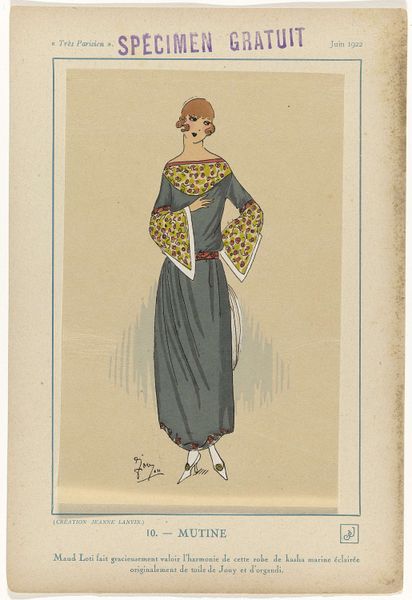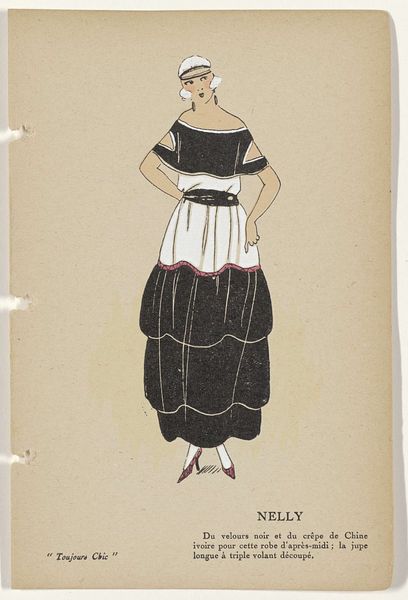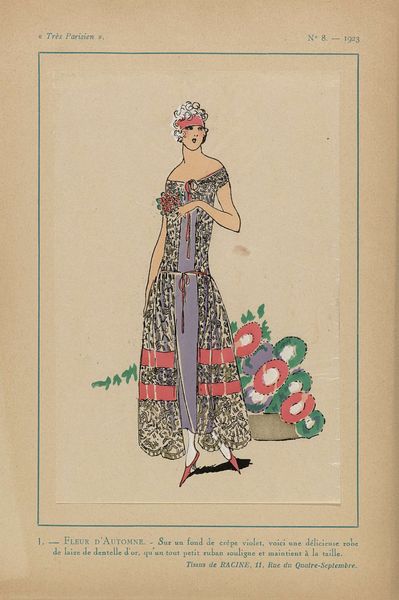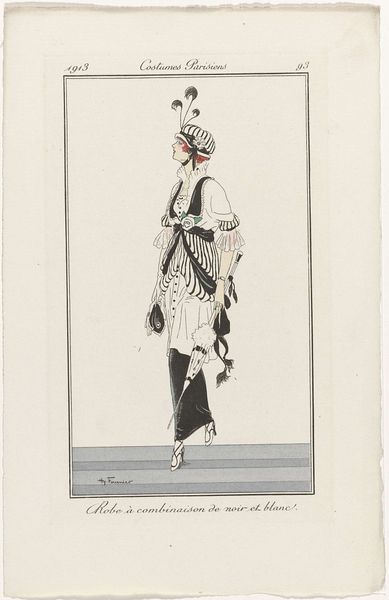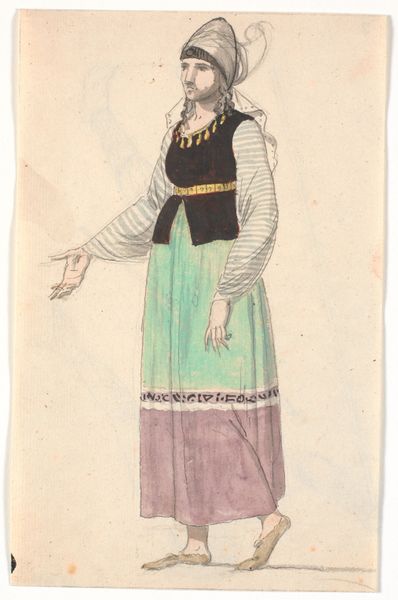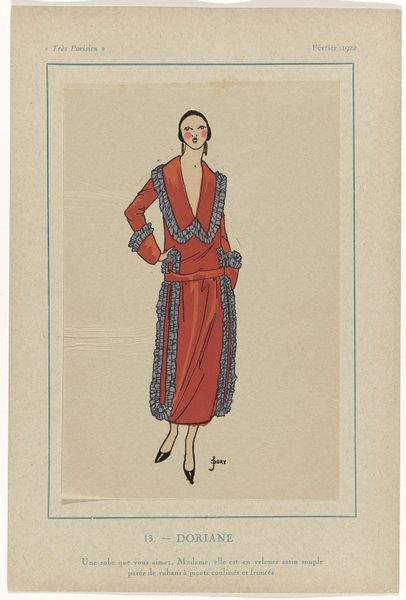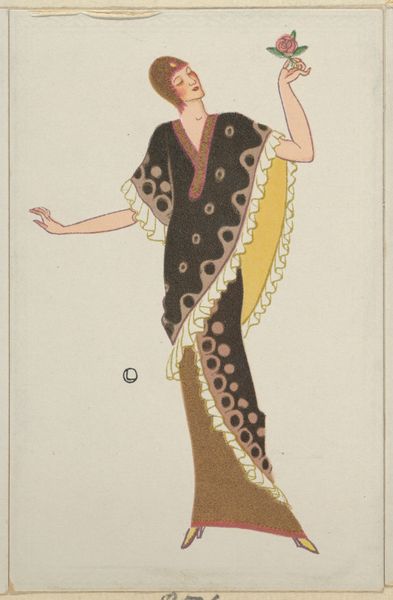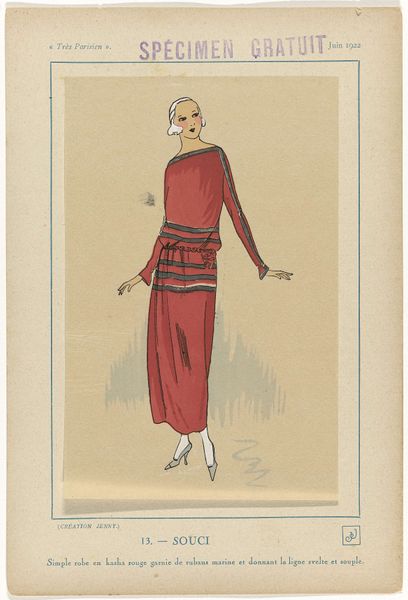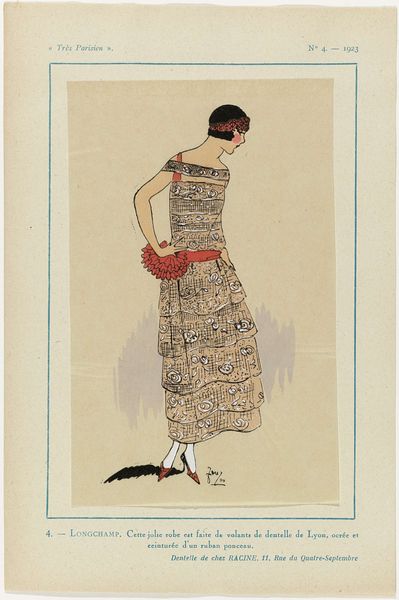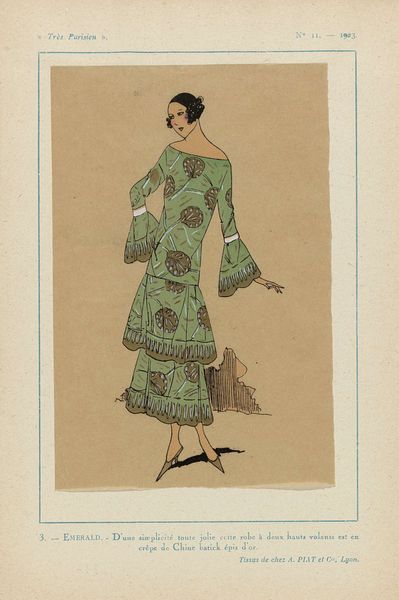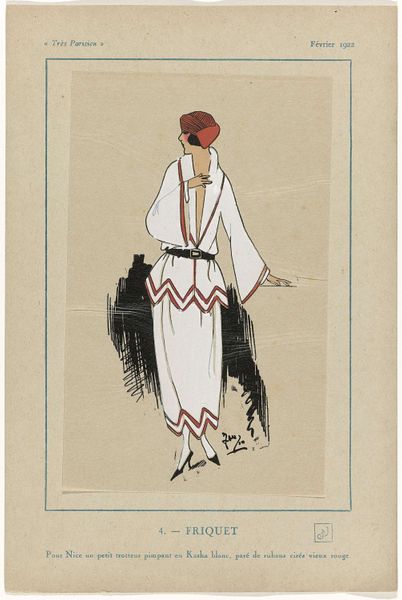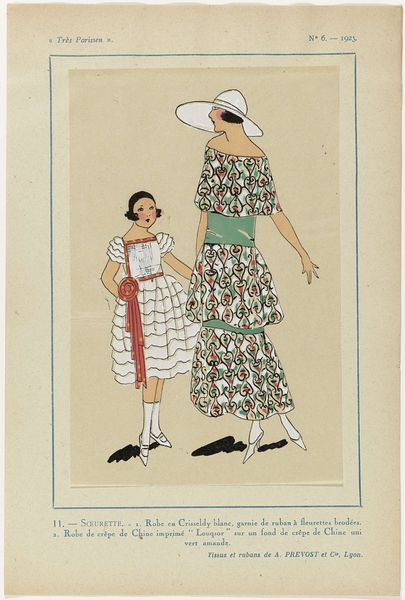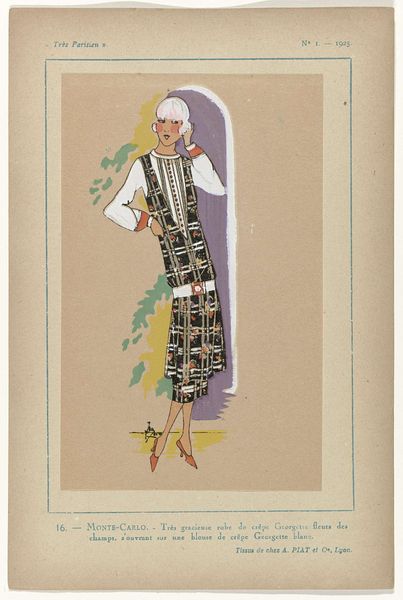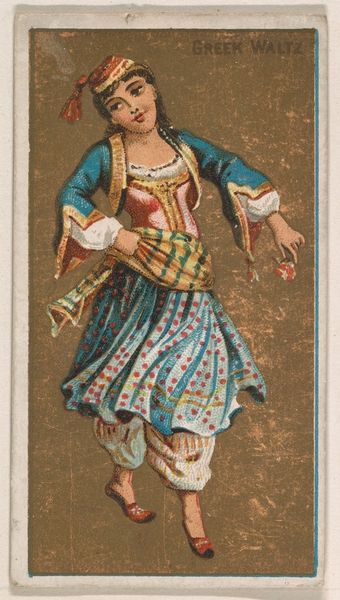
Très Parisien, 1923, No 6: 8. JEUNE FILLE. - Robe en voile Algéria... 1923
0:00
0:00
anonymous
Rijksmuseum
drawing, print
#
portrait
#
art-deco
#
drawing
# print
#
historical fashion
#
watercolour illustration
#
dress
Dimensions: height 269 mm, width 180 mm
Copyright: Rijks Museum: Open Domain
Editor: This drawing, titled "Très Parisien, 1923, No 6: 8. JEUNE FILLE. - Robe en voile Algéria..." is by an anonymous artist and dates from 1923. It looks like a print, perhaps with watercolor, and it depicts a fashionable young woman. It’s interesting how the artist used the different materials to create texture. What catches your eye about this work? Curator: What strikes me is the illustration’s purpose, showcasing an "Algeria voile dress." We see here the means of production inextricably linked to the subject itself. The labor involved—the Romanian embroidery, the worked ribbon trim on the satin bolero jacket—that is the heart of the artwork’s commentary. Editor: So, you're saying the materials and their creation are more important than the subject’s identity? Curator: Absolutely. Consider the title, "Très Parisien," evoking not just high fashion, but also a cultural ideal commodified and exported. We see a conflation of cultural influences – Algerian fabric, Romanian embroidery, Parisian design – each element produced by specific laborers and consumed within a particular social hierarchy. Even the method of reproduction – a print – speaks to broader consumption patterns of art and fashion. Editor: It’s easy to see it just as a pretty fashion plate. I hadn't considered the complex network of materials and labor that goes into it. Curator: Precisely. We can interpret this image not merely as an aesthetic object, but as a visual record of global exchange, a study in materiality, labor, and the early 20th-century fashion industry. Editor: Thanks, that gives me a completely different way to understand the artwork. I appreciate this materialist viewpoint!
Comments
No comments
Be the first to comment and join the conversation on the ultimate creative platform.
